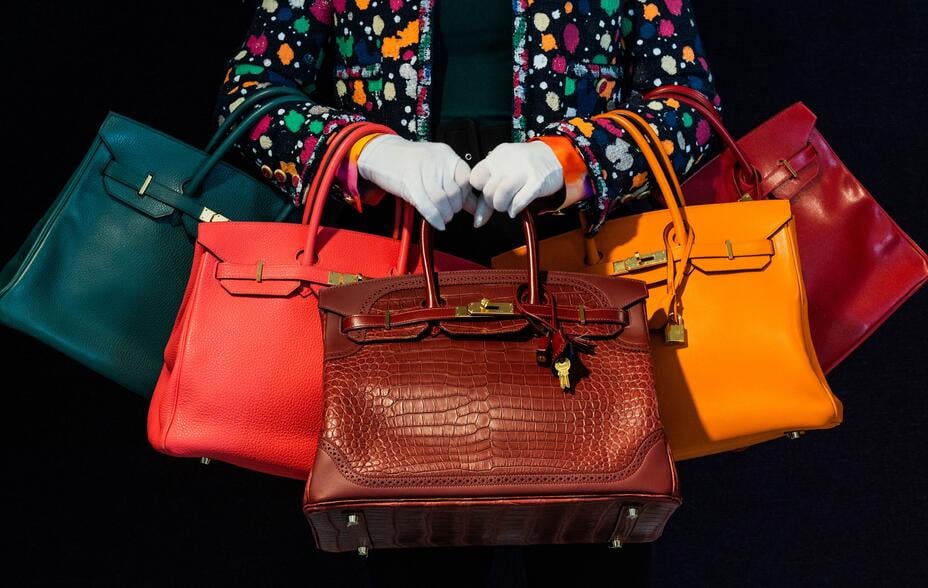
© Guy Bell/Shutterstock
Investors should consider the investment objectives, risks, charges and expenses carefully before investing. This information and other information about the Funds can be found in the prospectus and summary prospectus. For a prospectus and summary prospectus, please visit our website at bailliegifford.com/usmutualfunds. Please carefully read the Fund's prospectus and related documents before investing. Securities are offered through Baillie Gifford Funds Services LLC, an affiliate of Baillie Gifford Overseas Ltd and a member of FINRA.
As with any investment, your capital is at risk.
Though the global personal luxury goods market reached almost $390bn in 2023, double its size ten years ago, it’s recently experienced a slump. Economic uncertainty and price inflation are driving aspirational customers to cut back, particularly in the US and China, the industry’s largest markets.
Despite this, Baillie Gifford remains optimistic about the future of many luxury brands. This optimism is due to brand adaptability, growth in emerging markets outside of China, and the unique, centuries-old heritage that enhances their allure.
Who has been impacted by the downturn?
Rising wealth has been an important driver of the industry’s robust growth in Asia and abroad over the past two decades. We can see a slowdown in this market by observing the results of brands whose sales are more skewed toward Asia – namely, British brand Burberry and Kering’s Gucci label. Even beauty giant L’Oréal reported a challenging environment in China and Asian travel retail for its luxury cosmetics.
Kering, originally a timber-trading company founded in 1963 in France by Francois Pinault, transformed itself into a luxury group in the late 1990s. It rescued the failing Gucci amid family turmoil and brand mismanagement – fighting off LVMH’s Bernard Arnault in the process – and, with designer Tom Ford, transformed it into a $10bn brand.
Since 2005, Kering has been led by Francois-Henri Pinault and also owns brands including Saint Laurent, Balenciaga, and leather-weaver Bottega Veneta, which it successfully transformed into a “quiet-luxury” icon. However, its Gucci brand has been hit particularly hard in the industry downturn, weighing heavily on overall group profits.

The industry juggernaut LVMH has not been immune either and recently reported weaker sales growth. It operates in six market segments, which include fashion and leather goods, champagne and spirits, jewellery and watches, luxury travel, and retailing through its Sephora and duty-free airport stores. However, we believe its sheer size and broad portfolio will help it weather any storm.
The higher the prize, the more desirable
Ultra-premium positioning has been a key differentiator in the current environment, and brands catering to the wealthiest shoppers have hardly missed a beat.
Hermès – famed for its Birkin and Kelly bags – reported sales growth of 13 per cent for its most recent quarter, and Italian supercar maker Ferrari continues to see strong demand for supercar personalization, driving higher profit margins. Both businesses are unique in the industry in that they purposely limit the supply of their products. This scarcity increases demand, builds waiting lists for their products and affords them incredible pricing power; rich consumers need to be “in the club” to even get access to their products. It takes decades of dedication and growth to curate and polish this type of image.
Other luxury brands have been looking to emulate their ultra-premium peers, applying “brand elevation” strategies through a combination of more exclusive and expensive products. Kering’s Gucci is repositioning for this under new creative director Sabato De Sarno. Burberry is also transitioning its brand, aesthetic and product mix, with efforts taken to improve quality and expand its product range, including faster-growing and higher-margin leather goods. These re-positionings involve multi-year investments and will take time and patience to convert to success.
While there is execution risk and likely to be setbacks along the way, the outlook for businesses to improve and grow is something long-term investors should be excited about.
Glints of opportunity
Today’s most successful luxury brands have decades – centuries in some cases – of heritage, nurtured under careful stewardship. Founder and family ownership has certainly played an important role in creating a stable environment and clear long-term vision, and luxury brands’ age is a key pillar of their enduring growth prospects. That longevity is impossible for new entrants to replicate.
Further, while Greater China is a major market, other emerging economies have also started to play a more prominent role in the luxury industry’s growth. Looking ahead, forecasts indicate that the personal luxury goods market could grow at an annualized growth rate of 5 to 7 per cent until 2030. Half of the world’s population lives in Asia, with the number of middle-class consumers and disposable incomes set to rise strongly to the end of the decade and beyond.
In the same way that Microsoft is unique to the US stock market, the majority of luxury businesses are found within the international equity universe. That makes us very fortunate as bottom-up stock pickers in search of exceptional companies that can deliver long-term growth.
Important information and risk factors
The Funds are distributed by Baillie Gifford Funds Services LLC. Baillie Gifford Funds Services LLC is registered as a broker-dealer with the SEC, a member of FINRA and is an affiliate of Baillie Gifford Overseas Limited. All information is sourced from Baillie Gifford & Co unless otherwise stated.
As with all mutual funds, the value of an investment in the Fund could decline, so you could lose money. International investing involves special risks, which include changes in currency rates, foreign taxation and differences in auditing standards and securities regulations, political uncertainty and greater volatility. These risks are even greater when investing in emerging markets. Security prices in emerging markets can be significantly more volatile than in the more developed nations of the world, reflecting the greater uncertainties of investing in less established markets and economies. Currency risk includes the risk that the foreign currencies in which a Fund’s investments are traded, in which a Fund receives income, or in which a Fund has taken a position, will decline in value relative to the U.S. dollar. Hedging against a decline in the value of currency does not eliminate fluctuations in the prices of portfolio securities or prevent losses if the prices of such securities decline. In addition, hedging a foreign currency can have a negative effect on performance if the U.S. dollar declines in value relative to that currency, or if the currency hedging is otherwise ineffective.
For more information about these and other risks of an investment in the Funds, see “Principal Investment Risks” and “Additional Investment Strategies” in the prospectus. There can be no assurance that the Funds will achieve their investment objectives.
| Companies held by Baillie Gifford |
|---|
| Burberry |
| Ferrari |
| Hermès |
| Kering |
| L’Oréal |
| LVMH |
As at 30 September 2024
128218 10051675







